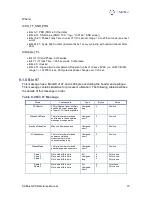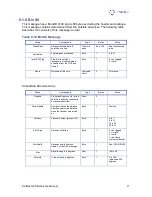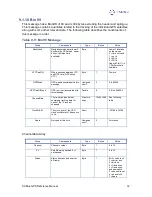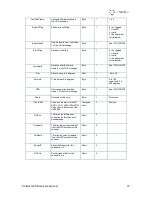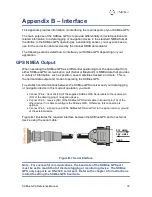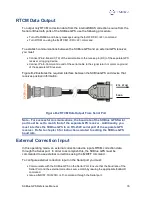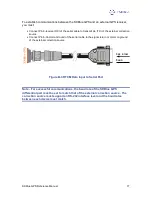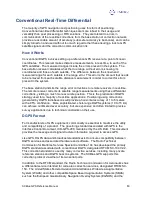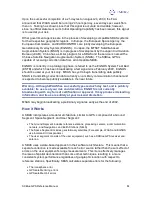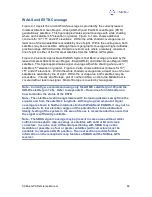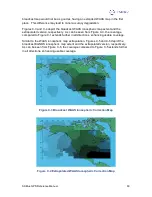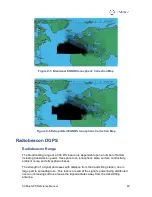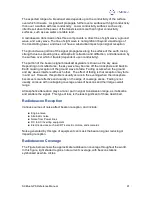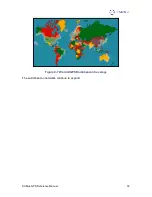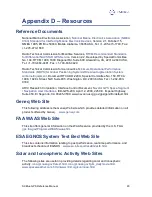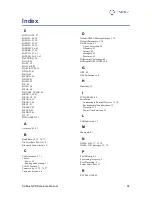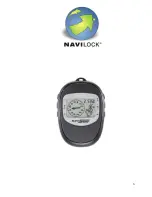
SXBlue GPS Reference Manual
83
•
The time required for the remote differential receiver to demodulate the signal and
communicate it to the GPS receiver.
•
Any data loss that occurs through reception problems
Most of these delays require less than a second, though in some instances, depending
upon the amount of information being transferred, overall delays of three to five seconds
may occur. The effect of latency is mitigated by new COAST technology within the
SXBlue GPS. This technology is especially valuable in conditions of DGPS signal loss
where the age of corrections increases for each second of signal loss. Consult Section
1.7 for further information on COAST.
Satellite Constellation Geometry
The number of satellites visible and their geometry in the sky influences positioning
accuracy. The Dilution of Precision (DOP) describes the strength of location and
number of satellites in view of the receiver. A low DOP indicates a strong potential for
better accuracy than a high DOP. Generally, more satellites visible to both the reference
and remote receivers will provide a lower DOP (any satellites seen by one receiver and
not the other, are not used in the position solution). Additionally, if the satellites are
evenly spread around the receiver, rather than grouped in a few regions of the sky, a
lower DOP (stronger solution) will result.
GPS Signal Multipath
Satellite signals received by the GPS receiver by a reflection from an object can
decrease positioning accuracy. These multipath signals increase the measured range to
a satellite as the signal takes a longer route to the GPS antenna. Certain precautions
will minimize GPS antenna sensitivity to these reflected signals. Operating away from
large reflective structures such as buildings or using special antennas and GPS
equipment can help to reduce the impact of multipath. For most consumer-level
applications, a small amount of multipath is tolerable.
GPS Receiver Quality
The quality of a GPS receiver has a dramatic influence on positioning accuracy.
Consumer-based GPS products, such as many affordable handheld and fixed-mount
receivers, typically operate with an accuracy of 3 to 5 meters horizontally 95% of the
time. The accuracy of a particular product depends on the specific receiver’s
performance characteristics. Higher accuracy GPS receivers are able to achieve sub-1
meter horizontal accuracy 95% of the time using real-time DGPS transmissions. The
SXBlue GPS falls in to this latter category.
Space Based Augmentation Systems
The US Federal Aviation Administration is in the process of developing a Wide Area
Augmentation System (WAAS) for the purpose of providing accurate positioning to the
aviation industry. In addition to providing a high quality, accurate service for this
industry, this service is available free of charge to all other civilian users and markets in
North America. This service falls into the greater category of Space Based
Augmentation System (SBAS).


